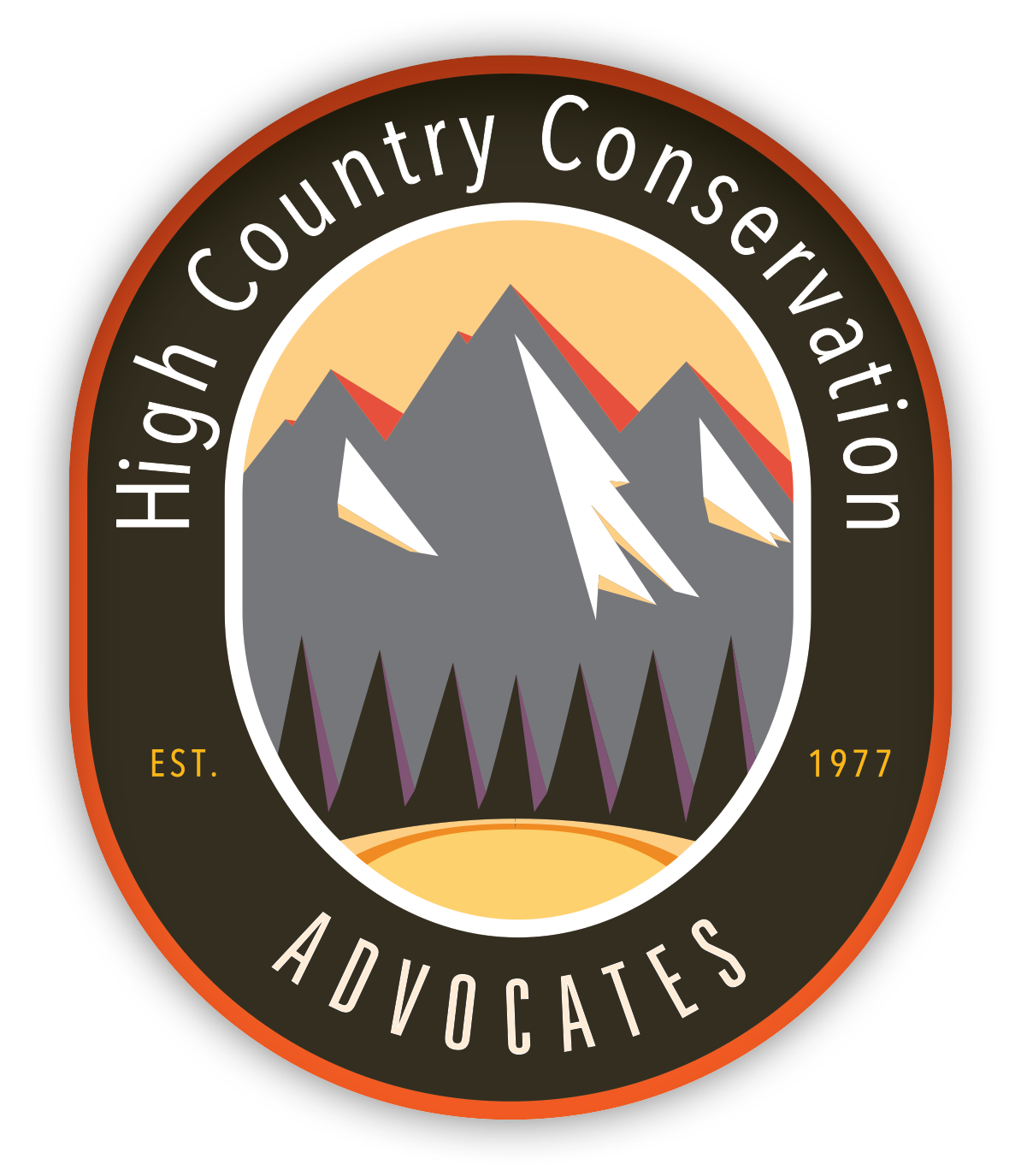Stewardship Project Spotlight: Trail Creek, Taylor Park
In 2021 High Country Conservation Advocates (HCCA) organized two community volunteer days with the US Forest Service to restore riparian and wetland ecosystems along Trail Creek in Taylor Park. Approximately 430 volunteer hours were contributed by community members supporting this environmental restoration project. Because of the success of this pilot project, we are planning to continue wetland restoration in Taylor Park for years to come.
Project Background
The project is part of a long-term, multi-phase effort to improve the quality of our water resources above Taylor Reservoir. The project will work to restore riverscape health using low-tech process-based restoration (LTPBR) principles and treatments. LTPBR treatments are simple, low unit-cost, structural additions to riverscapes that mimic natural processes to reverse legacy stressors and recover the ecological functions of riparian and wetland ecosystems. The ultimate goal of restoration is to promote and sustain the natural processes that maintain riverscape health. On Trail Creek this means restoring the keystone biological feedback loop made up of beavers, beaver dams and channels, ponds and wetland, vegetarian and wood.
Why Trail Creek?
Because of landscape changes, environmental impacts, the decline and loss of beavers, and other factors, Trail Creek has become a single sinuous stream thread that no longer has conductivity between the stream and its adjacent floodplain. There is now a lack of water on the increasingly-diminished floodplain, causing the area’s riparian vegetation to lack the biodiversity of plant species richness typically found in complex wetlands. As a result, the wetland is drying out and transitioning to a non-wetland corridor. Evidence of this is the encroachment of conifers and cinquefoil into the 100-year floodplain which historically (with beaver dams) would have been inundated with water and wetland plants.
What Has Been Done?
Phase 1 of the project, completed Fall 2021, built over 60 LTPBR structures along 0.3 miles of stream corridor on Trail Creek, improving conditions over an estimated 10-12 riverscape acres. The work was completed by restoration practitioners, contractors, partner organizations and a strong turnout from local volunteers. Our goal for Phase 2 of the project is to 1) reconnect and restore 115 acres of riparian and wetland habitat on 2.7 miles of stream corridor 2) regain the wildlife habitat and human benefits of these ecosystems.
What Is Happening Now?
We are now pursuing funding for Phase 2 of the project to complete work in the Trail Creek drainage and collect data to support three to five years of shelf ready subprojects. In 2022 and 2023 we aim to restore natural stream-wetland conditions to as much of the mainstem of Trail Creek as possible by addressing the remaining 2.7 miles of stream corridor. This project represents a valley-wide effort to support LTPBR projects, much like the wet meadow restoration work over the past 10 years, to restore and enhance wetlands within the sagebrush-steppe ecosystem.
How Do I Get Involved?
We plan to build upon the strong volunteer foundation that we laid last year and invite all members of our community to enjoy spending time improving the health of our public lands. Project implementation will take place in July and September of 2021. HCCA volunteers receive safety equipment, training, educational materials, meals, and oversight in a fun and professional environment. If interested in volunteering, sign up on the HCCA website HERE. You can also directly email Eli Smith, HCCA’s Environmental Stewardship Fellow (eli@hccacb.org).
To learn more about this project and importance of beavers on the landscape, view the StoryMap produced by Jeremy Snyder and for a more in-depth project report on Trail Creek, view the document prepared by EcoMetrics.

